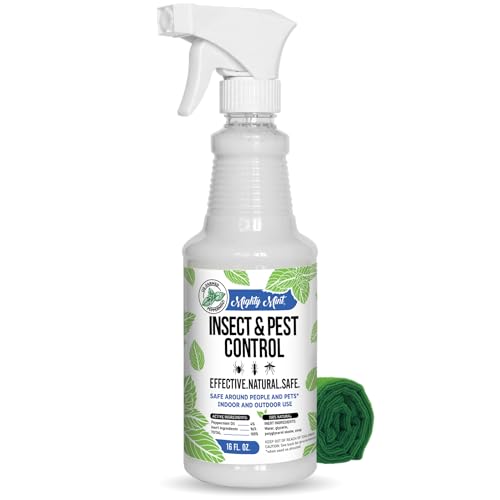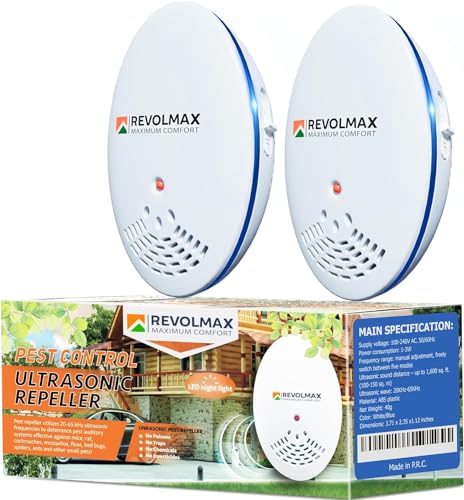How to get rid of flying ants – 5 ways to rid your home of these winged pests
Expert-approved methods to combat flying ants when a swarm hits


Flying ants are frightful pests that, while harmless, can be irritating or frightening when they swarm. Because of this, many people wonder how to get rid of flying ants and what you can do to prevent them from over-running your property.
Flying ants are the fertile male and female ants who leave the nest to begin a new colony. They appear in July or August on a hot day, often after a period of heavy rain. Due to their nature, they tend to swarm and gather to reproduce. For many of the same reasons why ants come into the house, flying ants are attracted to food, shelter, and a safe space to multiply. It is important, therefore, to learn how to get rid of ants and flying ants to protect your home and yard from the nuisance they cause.
We have spoken to experts to learn what attracts flying ants and how you can stop them from being a problem when they start to appear.
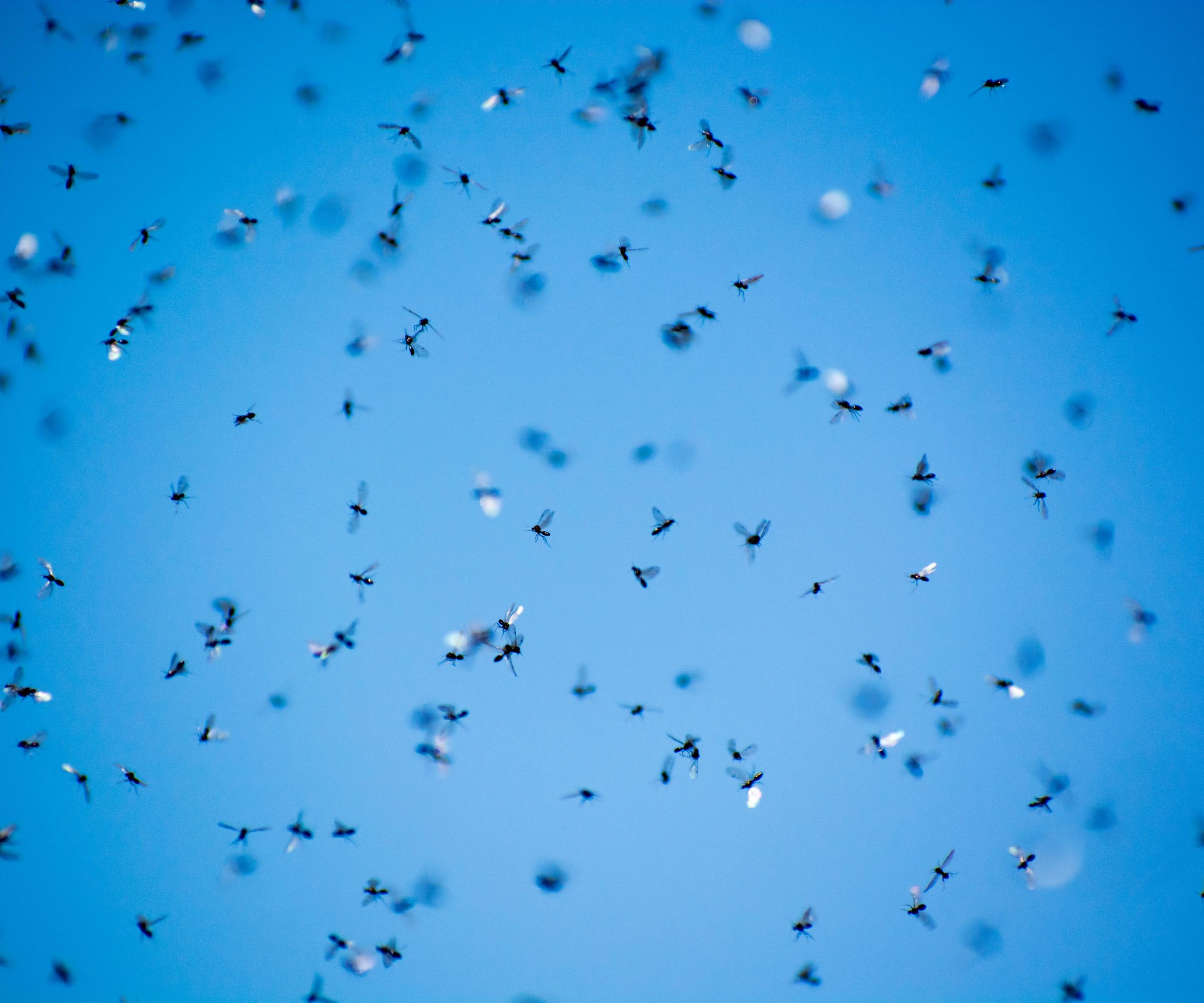
How to get rid of flying ants in your yard
'Although they can be a nuisance and alarming in great numbers, flying ants do not cause any harm and will go, usually as quickly as they appear, typically within a few hours,' explains Paul Blackhurst, technical academy head at Rentokil Pest Control. 'They provide a timely opportunity for birds to find food for their young, and their increased numbers could be seen as a positive sign for our natural ecosystems.
'After experiencing a prolonged period of warm weather across the country, we are seeing high numbers of flying ants taking to the sky, as they emerge from hiding to search for a suitable mating partner.'
While these bugs are fine outside, once they enter your home they can damage insulation or become a hazard around your food. Luckily, there are a few ways to get rid of flying ants if they have entered your home before they establish a colony inside of your property.
1. Block up points of entry
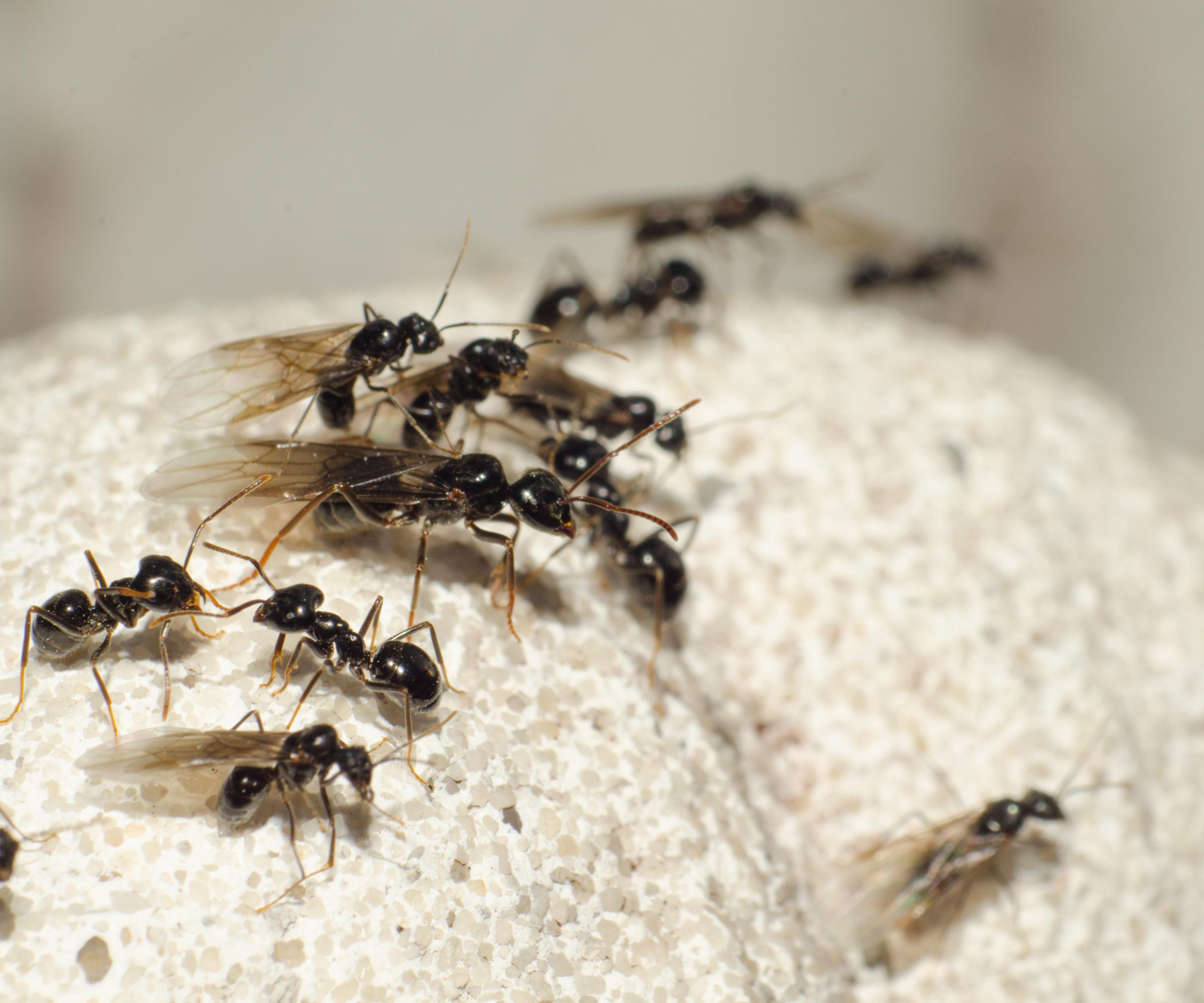
Unlike carpenter ants, flying ants typically remain outside where they can burrow into the soil and mate in the air. When they do end up in your home, however, it is likely they have entered by accident.
Flying ants' point of entry could be as simple as an open window or a broken vent, or something more difficult to find such as a crack or hole. It is important to fully seal these entrances with a masonry or concrete sealant such as this top pick on Amazon, preferably before the swarms begin so the bugs do not become trapped in your home.
Closing these entry points after they have entered your space will help to keep more intruders out but you will be required to use alternative means to remove the remaining pests from your property.
2. Use a vacuum to remove them immediately
If flying ants have swarmed in your home or settled on your surfaces using a vacuum is the most effective way of removing large swathes at a time.
If using the vacuum method, it is advised that you empty the vacuum into an outside garbage or hedgerow (as long as there is no other debris in the vacuum) as soon as they have been collected to prevent them finding their way back inside your home.
3. Use pesticides or bug sprays
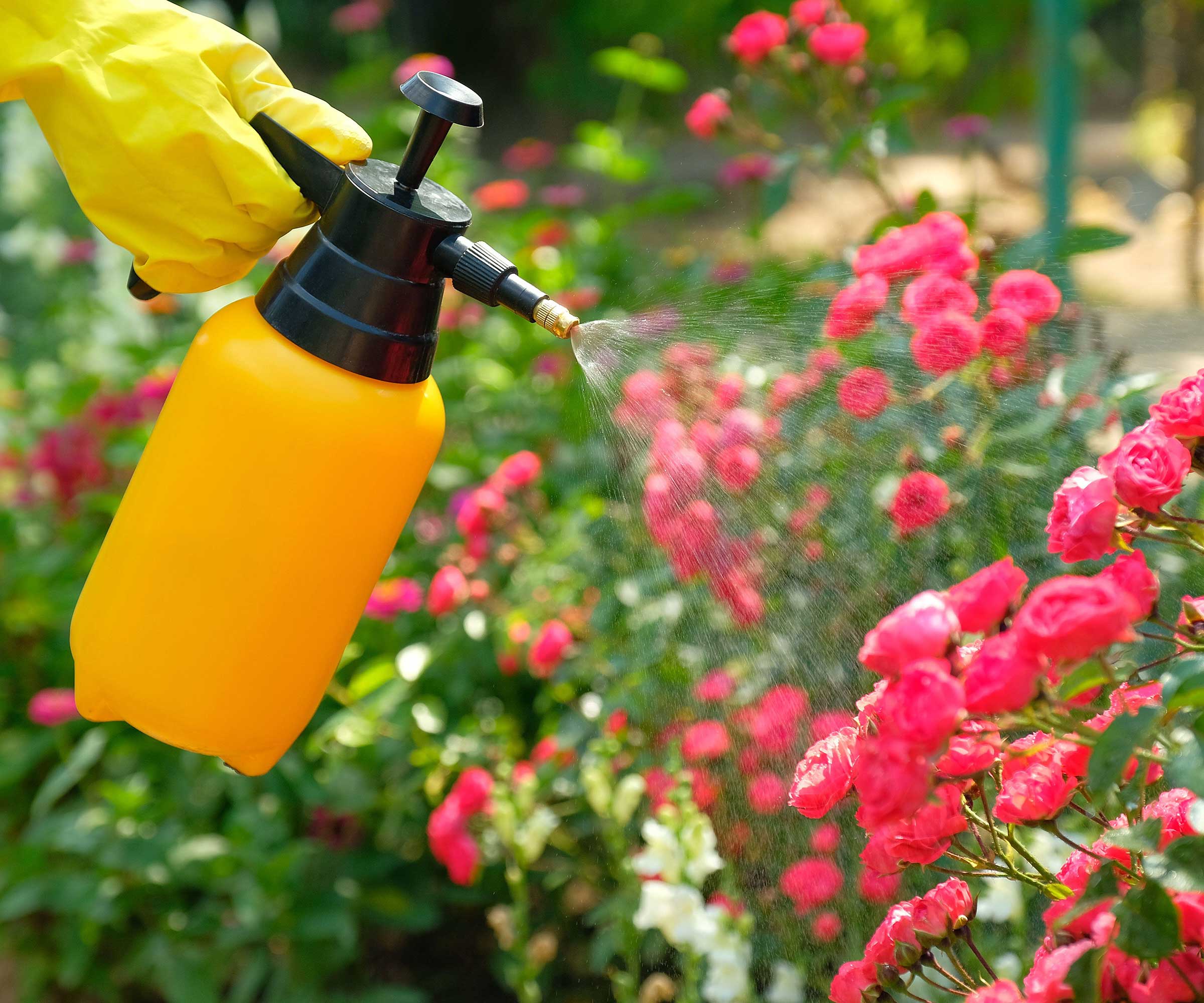
Although not as quick a fix as the vacuum, spraying natural pesticides, such as Dr. Killigan's Plant Powered Insect Killer Spray, available from Amazon, or your own homemade bug sprays can help to eliminate flying ants as well as crawling ants. When using these sprays inside make sure to use a non-toxic variety and spray with caution to protect your furnishings and lungs.
A natural spray can be made out of one part liquid dish soap, two parts water, and a few drops of peppermint oil. Strong-smelling mint aromas are one of many smells that ants hate and will deter them from settling in or around your home. This solution helps to immobilize the ants and eventually dehydrate and suffocate them. Citronella is also effective at deterring pests such as ants and mosquitos.
4. Remove the colony
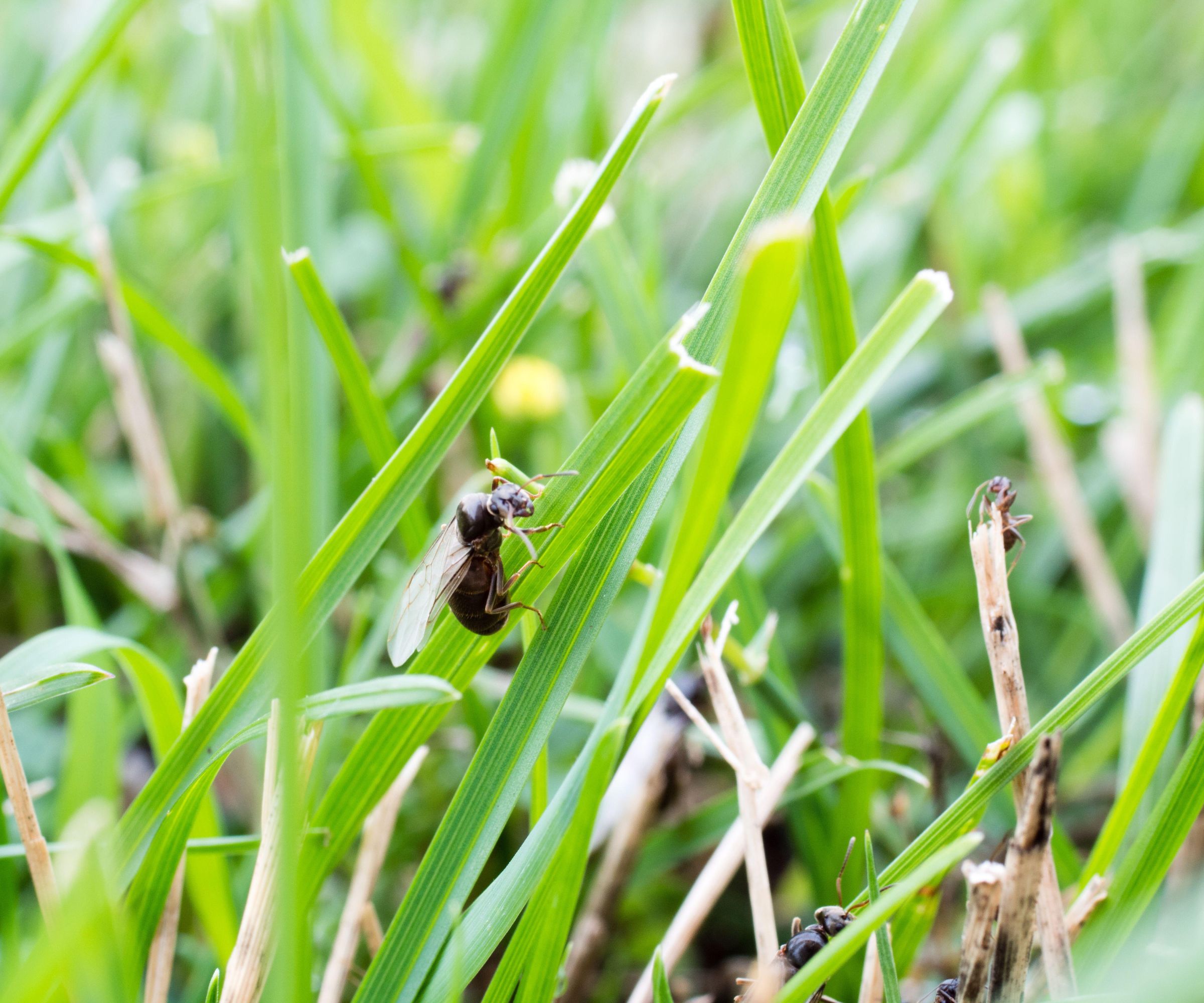
The most effective way to get rid of flying ants for good is to attack the source. As with any pest infestation, it will be difficult to remove the bugs for good without eliminating their home and breeding ground. If you are able to locate the general area of the colony, set a bait trap, such as the TERRO bait stations available at Amazon, to eliminate the colony all at once.
To make a bait trap mix any sweet substance such as honey or treacle with borax. Worker ants will collect this bait and take if back to the nest where it will kill the colony.
An alternative is to employ insecticidal dust that can be injected into the colony. This requires you to know the exact location of the colony and its tunnels, so it is best left to a professional exterminator to ensure the desired result without causing any harm to yourself or your garden ideas.
5. Call in a professional
Professional pest controllers can help you get rid of any pest invasion, though, in the case of flying ants, it's likely they will have disappeared again in the hours it takes for you to get someone to call at your home.
If however, there is a bothersome colony that you have located, they can tackle this for you. If they are not causing you a problem, leave flying ants well alone as they are an important part of the natural ecosystem and make great food for wild birds.
FAQs
What attracts flying ants to your home?
Flying ants are attracted to your home for many of the same reasons as regular ants: food and moisture to take back to their colony. If you find flying ants around your home it is a sign that the nearby colony is well established and secure enough to produce reproducing ants. Ants can foster homes in almost any dark, hidden corner so it is worth checking to see if the colony is in your yard or somewhere in or beneath the house itself.
What is 'flying ant day'?
'The term ‘flying ant day’ often prompts the common misconception that this annual event occurs within the space of just a day, but in reality it occurs sporadically across different parts of the country as and when the weather conditions and temperature are right,' explains Paul Blackhurst, technical academy head at Rentokil Pest Control.
'This natural phenomenon is in fact a survival tactic designed to overwhelm potential predators such as swifts and gulls. Mating takes place on the wing between the fertile male (the smaller flying ant) and the unmated female (the larger flying ant). Once mating has finished both will fall to the ground where the male dies and the new, now fertile queen, loses her wings and then starts to bury herself underground to form a new nest.'
While swarming flying ants can be frightening, it is important to remember that they are great for outdoor environments. Because of this, it is wise to leave flying ants alive when you can. Swarms do not last for long, so if you see flying ants outside and away from your property it is best to leave them be. When flying ants have entered your home, however, exterminating the pests can be one of the few ways to get them out of your house.
Sign up to the Homes & Gardens newsletter
Design expertise in your inbox – from inspiring decorating ideas and beautiful celebrity homes to practical gardening advice and shopping round-ups.

Chiana has been at Homes & Gardens for two years and is our resident 'queen' of non-toxic living. She spends most of her time producing content for the Solved section of the website, helping readers get the most out of their homes through clever decluttering, cleaning, and tidying tips. She was named one of Fixr's top home improvement journalists in 2024.
-
 5 surprising but brilliant ways to clean with old socks – from perfectly buffing stainless steel to deterring pests naturally and more
5 surprising but brilliant ways to clean with old socks – from perfectly buffing stainless steel to deterring pests naturally and moreTackle dust in tricky corners, clean your mirrors and even banish bad odors with those rogue single socks
By Andy van Terheyden Published
-
 How to grow astilbe – expert advice on cultivating this shade-tolerant flowering perennial
How to grow astilbe – expert advice on cultivating this shade-tolerant flowering perennialShade-tolerant and pest-resistant - astilbe are hardy and tough perennials that can thrive in many settings
By Ellen Wells Published
